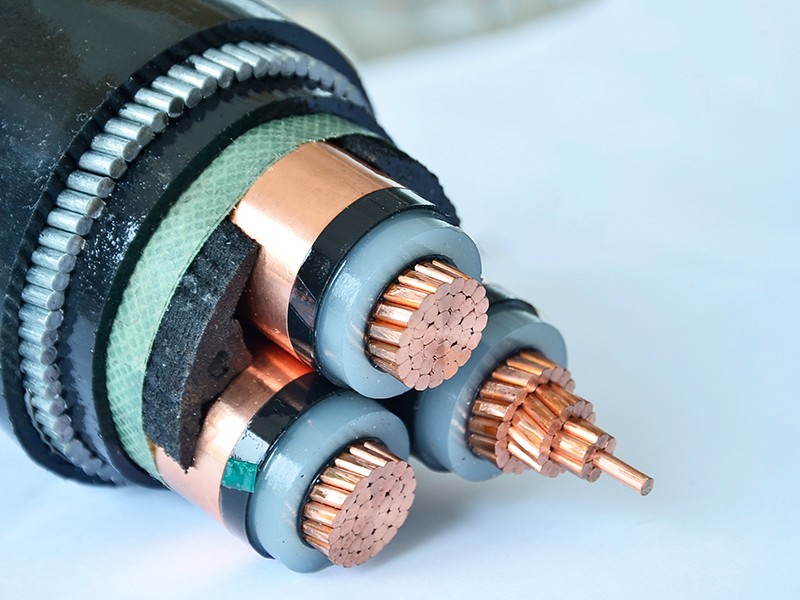
As we all know, in the electric power industry, the voltage levels are commonly 220v, 380v, 1kv, 10kv, 35kv, 110kv, 220kv, and 500kv.
In addition, 220v and 380v are considered as low voltage and are mainly used for household electricity.
35kv and above are high voltage and are mainly used for power transmission.
In between these two is medium voltage.
It is important to note that it is very dangerous to touch high-voltage power lines or to work with electricity under the lines.
The components of a high-voltage cable from the inside out include the conductor, the insulation, the inner sheath, the armor, and the outer insulation.
Of course, armored high-voltage cables are mainly used for burial, which can resist the high-strength compression of the ground and prevent damage by other external forces.
As we all know, high-voltage cable is a transmission channel for real-time transmission of high-capacity electricity to cities.
This high-frequency current is underground, and if its electromagnetic effect is not shielded, it is estimated that the nearby metals will generate an induced electromotive force.
And these metals cannot be kept dry underground, so they cannot avoid electrochemical corrosion. These are not allowed in dense cities. As a good conductor, the metal shield ensures a reliable grounding of the external semiconductor layer.
The basic structure of a power cable consists of four parts: core conductor, insulation layer, shielding layer, and protection layer.
The core is the conductive part of the power cable, which is used to transmit electrical energy and is the main part of the power cable.
The insulation layer is an indispensable part of the power cable structure to electrically isolate the cores from the earth and the cores of different phases from each other and to ensure the transmission of electrical energy.
1 Insulation is the key structure that reliably isolates the high-voltage electrode from the ground electrode.
Withstand working voltage and various overvoltages for a long time, so its electric strength and long-term stability is the most important part of the cable to ensure that the whole cable completes the task of power transmission.
2 It can withstand the thermal action of the heating conductor and maintain the proper electrical strength.
The progress of cable technology is mainly determined by the progress of insulation technology. From production to operation, the vast majority of test measurements are aimed at monitoring the various properties of the insulation for this purpose.
Power cables of 15KV and above generally have a conductor shield and an insulation shield.
The role of the protective layer is to protect the power cable from the intrusion of external impurities and moisture, as well as to prevent direct damage to the power cable by external forces.
1 Low-voltage electrode for forming the working electric field
When there is a local burr will also form a large electric field strength, therefore, also try to make the conductor surface as smooth and round as possible without burr.
2 Provide the path for capacitive current and fault current
Therefore, there is also a certain cross-section requirement.
The conductor is the pathway that provides the load current.
1 Conductor Cross-Section and DC Resistance
As the current through the conductor will generate heat due to the existence of resistance of the conductor, therefore, according to the transmission current to choose a suitable conductor cross-section, its DC resistance should meet the specified value to meet the thermal stability requirements of cable operation.
2 Conductor Structure
The conductor is also the high-voltage electrode of the cable, and its surface electric field strength is the largest, and if there is a local burr, the electric field strength there will be even greater. Therefore, one of the main technical problems to be solved in the design and production as well as the use of the department in making the conductor connection of the joint is to try to make the conductor surface as smooth and round as possible without burrs, in order to improve the electric field distribution on the conductor surface.
Hope this article was helpful. We supply all kinds of cable products, for more information, welcome to contact us directly.